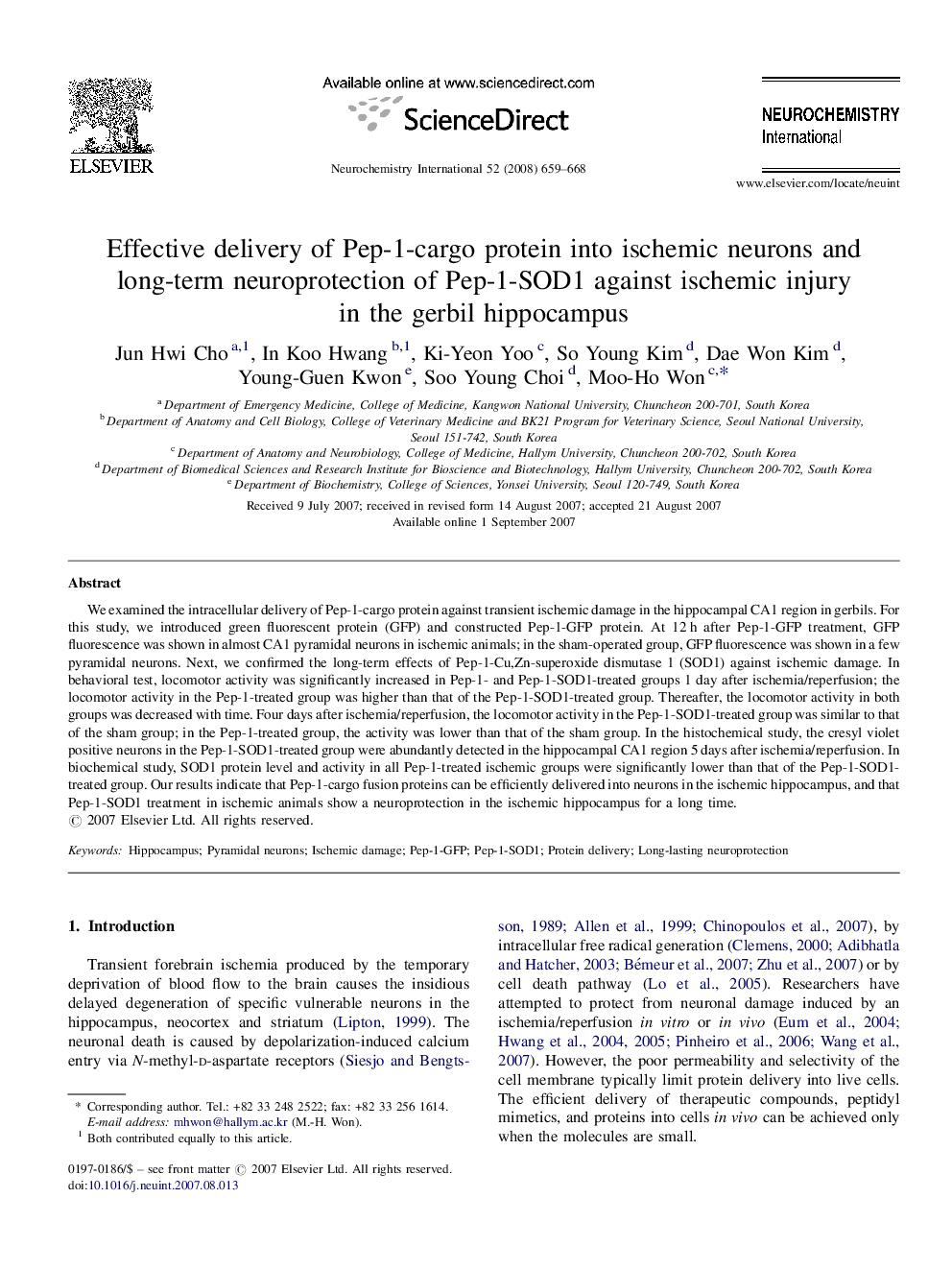| Article ID | Journal | Published Year | Pages | File Type |
|---|---|---|---|---|
| 2201754 | Neurochemistry International | 2008 | 10 Pages |
We examined the intracellular delivery of Pep-1-cargo protein against transient ischemic damage in the hippocampal CA1 region in gerbils. For this study, we introduced green fluorescent protein (GFP) and constructed Pep-1-GFP protein. At 12 h after Pep-1-GFP treatment, GFP fluorescence was shown in almost CA1 pyramidal neurons in ischemic animals; in the sham-operated group, GFP fluorescence was shown in a few pyramidal neurons. Next, we confirmed the long-term effects of Pep-1-Cu,Zn-superoxide dismutase 1 (SOD1) against ischemic damage. In behavioral test, locomotor activity was significantly increased in Pep-1- and Pep-1-SOD1-treated groups 1 day after ischemia/reperfusion; the locomotor activity in the Pep-1-treated group was higher than that of the Pep-1-SOD1-treated group. Thereafter, the locomotor activity in both groups was decreased with time. Four days after ischemia/reperfusion, the locomotor activity in the Pep-1-SOD1-treated group was similar to that of the sham group; in the Pep-1-treated group, the activity was lower than that of the sham group. In the histochemical study, the cresyl violet positive neurons in the Pep-1-SOD1-treated group were abundantly detected in the hippocampal CA1 region 5 days after ischemia/reperfusion. In biochemical study, SOD1 protein level and activity in all Pep-1-treated ischemic groups were significantly lower than that of the Pep-1-SOD1-treated group. Our results indicate that Pep-1-cargo fusion proteins can be efficiently delivered into neurons in the ischemic hippocampus, and that Pep-1-SOD1 treatment in ischemic animals show a neuroprotection in the ischemic hippocampus for a long time.
